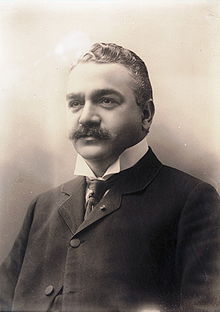It has been said that living in Norway makes Norwegians highly value summers in their variety of outdoor activities. The idea is to store up as much happy sunshine as possible to last through the long and dreary winter. Our long winter nights are always relieved every morning by light-filled days, however dreary. Can anyone imagine the long winter night lasting for days without the light of morning? It is typical for foreigners to be nervous about facing the dark winters in Norway.
For those living above the Arctic Circle, there is a period of time when the sun doesn’t make it over the horizon. When the sun doesn’t appear for twenty-four hours, it is called a Polar Night. The higher you go above the Arctic Circle, the more Polar Nights there are. Tromsø, one of Norway’s northernmost cities is 350 kilometres (217 miles) above the Arctic Circle and has sixty Polar Nights in a row. The largest differences in Northern Norway is having midnight sun in the summer months and no sunshine at all during winter.
----------------
Norwegian Exchange School students attending U.S. schools speak of having to endure daily doses of cod liver oil during the winter season. It is firmly believed that cod liver oil helps the body replace the loss of the sunlight, due to its oily content of omega-3 fatty acids, vitamin A and vitamin D. Even though Norwegians eat a lot of fish products, it is normal for children and adults to have a spoonful of cod liver oil every day of theyear. This is preventative medicine taken to avoid winter SAD ( Seasonal Affective Disorder) , a winter depression that effects especially those living in the Nordic countries. Winter depression was actually discovered in the 6th century by the Gothic scholar Jordanes from his study of Scandza (Scandinavia).
----------------
Winter SAD is caused by a biochemical imbalance due to the lack of sunlight. The main symptoms are tiredness and oversleeping, fatigue, a craving for sugary foods, feelings of sadness, guilt and a loss of self-esteem, irritability, and avoiding social and physical contact. Sound familiar? Norwegians are taught about this disorder in daily life, from family, in schools and by the government through TV campaigns. Awareness of winter SAD is a fact of life.Codliver oil, while unappetizing, is a necessity.
------------------
Despite all the negative characteristics of winter, Norwegians really enjoy the dark season. It is a time of celebration with Advent, St Lucia Day, Christmas, Julebukk, New Years, and the end of Christmas party. And without darkness, you can not see the Northern Lights. Often bright lights, lightboxes, and candles are used to provide intense ilumination. Many methods are used to break the spell of the constant darkness.
-----------------
A very unusual solution to the constant darkness is being conducted in a Norwegian town called Rjukan. Rjukan was formerly a significant industrial centre in Telemark, and the town was established
between 1905 and 1916 when Norsk Hydro started saltpeter (fertilizer) production there. Rjukan was chosen because Rjukanfossen, a
 |
| Rjukanfossen |
 |
| Krossobanen Cable Car |
Rjukan is located by the Hardangervidda National Park, known for the famous Gaustatoppen Mountain.
 |
| Gaustappen with Rjukan in the valley |
--------------------
Rjukan is located in a deep valley surrounded by mile-high mountains. While the rest of Northern Norway views a least a murky part of winter sun, the sunlight is not seen in Rjukan for several months due to the surrounding mountain shadows. The famous Gaustatoppen Mountain effectively blocks the light during this murky period of winter from September until sunlight fully returns in March.
-----------------
Norsk Hydro opened in 1911 for the main purpose of creating
nitrogen for the production of fertilizer in nearby Vemmok. Nazi
invaders converted the
 isolated site to mass-produce heavy-water that was
necessary to produce nuclear fission and the creation of an atomic
bomb.During World War II. Vemok was the target of Norwegian heavy-water
sabotage operations resulting in the closing of the heavy water plant. In 1988 the power station became the Norwegian Industrial
Workers Museum.
isolated site to mass-produce heavy-water that was
necessary to produce nuclear fission and the creation of an atomic
bomb.During World War II. Vemok was the target of Norwegian heavy-water
sabotage operations resulting in the closing of the heavy water plant. In 1988 the power station became the Norwegian Industrial
Workers Museum.
-------------
 | |
| Sam Eyde, Norwegian Industrialist. |
-----------------
A construction crew has removed trees to provide an uninterrupted line of sight from the sun to mirrors, then, the sunlight is reflected from mirrors to the people below. After laying a concrete foundation on the slope a quarter-mile above the town, they have installed three huge mirror panels flown in from Germany by helicopter .The completed mirror assembly will measure about 540 square feet and will redirect the winter sun into the town center. It will illuminate an elliptical area over 2150 feet square. Solar power will allow a computer in the town hall to track the movement of the sun with sensors on the installation.Controlled by computer, the mirrors (known as heliostats) will
reposition themselves to automatically track the sun's movements,
hopefully revitalizing the town during the dark winter months.
It will illuminate an elliptical area over 2150 feet square. Solar power will allow a computer in the town hall to track the movement of the sun with sensors on the installation.Controlled by computer, the mirrors (known as heliostats) will
reposition themselves to automatically track the sun's movements,
hopefully revitalizing the town during the dark winter months.
--------------------
Nestled deep in a valley, gloomy Rjukan citizens never receive direct sunlight between September and March. The big test begins in September, when the angle of the sun begins the winter shadows over Rjukan..
Soon they will be able to see the light!






No comments:
Post a Comment